Search
Search Results
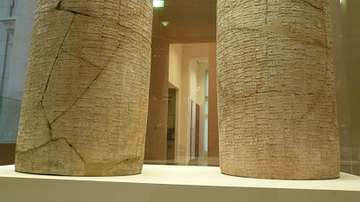
Image
Gudea Cylinders
These two cylinders were commissioned by Gudea of Lagash (c. 2144-2124 BCE) as a literary and historical record of the construction of the temple of Ningirsu.
Louvre, Paris
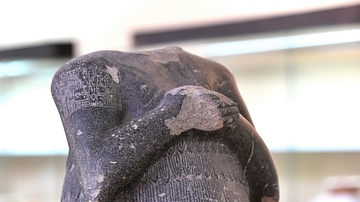
Image
Headless Statue of Entemena of Lagash
This black diorite statue depictes Entemena, a king (or ruler) of Lagash, around 2400 BCE; identified by the cuneiform inscriptions on the right shoulder and back. The king wears the typical flounced Sumerian skirt. The statue was found in...
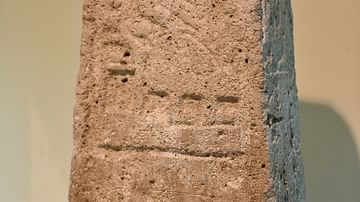
Image
Obelisk of Ur-Nanshe from Lagash
This large white limestone obelisk was found in Lagash, southern Mesopotamia, in modern-day Iraq. All of the 4 aspects of the obelisk were carved, in reliefs, with different scenes. The frontal surface depicts the Sumerian goddess Nisaba...
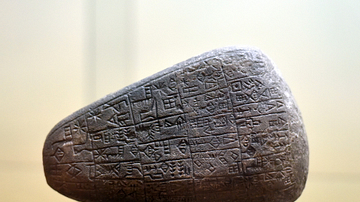
Image
Stone Pebble of Prince Eannatum of Lagash
A variety of pebbles, clay tablets, and plaques were found at the ancient city of Lagash and girsu. The cuneiform inscriptions mention on them the name of Eannatum, prince and ruler of Lagash. The narration usually states that he was given...
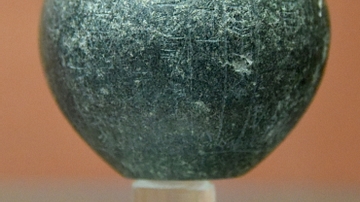
Image
Votive Mace Head from Lagash
This mace head was inscribed with a cuneiform text. The text says that the mace is dedicated to the god Kindazi by the lady Ninkagina, both on her own behalf and that of Nam-mahani, who was a king of Lagash. The mace head itself has a name...

Image
King Enannatum I of Lagash
The inscriptions on this stone plaque mention the name of Enannatum I, king (or ruler) of Lagash. The plaque was fixed to a wall of a shrine or temple. The king's hands are folded in a worship position. c. 2420 BCE, from Girsu (modern Tell...

Definition
Early Dynastic Period (Mesopotamia)
The Early Dynastic Period of Mesopotamia is the modern-day archaeological term for the era in Mesopotamian history – 2900-2334 BCE – during which some of the most significant cultural advances were made including the rise of the cities, the...

Image
Amarna Letter from Shipti Ba'al of Lagash
This clay tablet is part of the Amarna letters. This letter was sent from Shipti Ba'al, who reassures the Egyptian pharaoh of his loyalty. The letter was written in Babylonian cuneiform inscriptions. 14th century BCE. From Tell el-Amarna...

Definition
Mesopotamian Warfare
Ancient Mesopotamian warfare progressed from companies of a city's militia in Sumer to the professional standing armies of Akkad, Babylon, Assyria, and Persia and from conflicts over land or water rights to wars of conquest and political...

Definition
Sumer
Sumer was the southernmost region of ancient Mesopotamia (modern-day Iraq and Kuwait) which is generally considered the cradle of civilization. The name comes from Akkadian, the language of the north of Mesopotamia, and means “land of the...